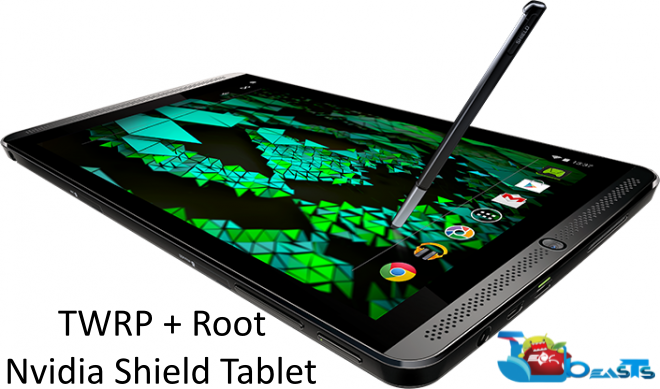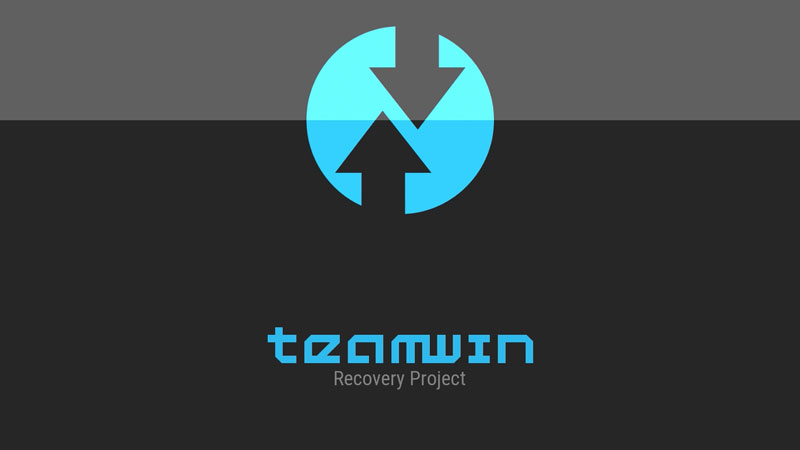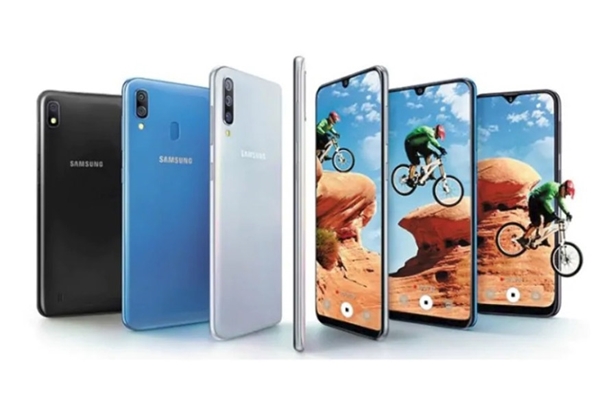TWRP Recovery now officially supports Nvidia Shield Tablet. You can easily install TWRP 2.8.x.x recovery on your Nvidia Shield Tablet and also gain root access on this device. You will find a detailed guide to perform the aforementioned tasks on your Nvidia Shield tablet in the proceeding guide. We will go through a brief over-view of this device before flashing the custom recovery.
Nvidia Shield Tablet carries an 8-inch display with a resolution of 1920 x 1200 pixels. Nvidia equipped this device with Nvidia Tegra K1 Quad-core CPU clocked at 2.2 GHz accompanied by a RAM of 2 GB. Nvidia Shield Tablet sports a 5 MP camera at the back. This device has an internal storage of 16 GB and also supports external SD card slot. The device was found running on Android KitKat out of the box, but later on it received Android 5.0.1 Lollipop update as well. If you’re willing to modify your Nvidia Shield Tablet by means of some MODs, tweaks, custom ROMs or by means of some root-specific applications, you will need a custom recovery and root access on your Nvidia Shield Tablet.
If you do not have an idea about a custom recovery and root access previously, you may want to know a little bit about both these things. A custom recovery is your way towards the open-source world of customisation on Android. Once you’ve a custom recovery installed on your Nvidia Shield Tablet, you will be able to flash custom ROMs on your tablet to give it a whole new life. You can add new features to your Shield Tablet by means of some MODs or by applying some custom tweaks. You can also backup Nandroid. Another option is to wipe cache and dalvik cache using a custom recovery. Root access serves a little different purpose. Once your Nvidia Shield Tablet is rooted, you will be able to install root-specific applications like Root Explorer, Greenify, System Tuner. Such applications allow you to access root directory of your tablet, enhance the performance and battery life of your device and a lot more. To be able to have such freedom on your Nvidia Shield Tablet, follow the succeeding guide to install custom recovery i.e. TWRP Recovery and root your Nvidia Shield Tablet.
Here are some precautions
- This guide is intended for Nvidia Shield Tablet only. Do not try to use this guide on any other device as you may result in bricking it by flashing an invalid file.
- Charge your tablet up to 50% to avoid power issues during flashing process.
- Backup your important contacts, call logs, sms messages and media content before proceeding.
- Turn off Windows Firewall before connecting your device to your PC.
- Make sure that you’re using original data cable to establish connection between your tablet and your computer.
- Download and setup Minimal ADB & Fastboot drivers. Mac users can use this guide to install ADB & Fastboot drivers.
- Enable USB debugging mode on your Nvidia Shield Tablet. To do so, go to settings > about device > tap build number for 7 times. You will have developer options enabled in settings. Open developer options > Enable USB debugging mode.
- Follow this guide carefully to avoid any mishaps and get the process done successfully.
Disclaimer: Unlocking bootloader, flashing custom recoveries and rooting the Android smartphones at first involves going through a complex process and it includes potential risks. Although the methods listed on our site are pretty much safe to follow, but we do not guarantee a safe result in the end. Just in case you end up bricking your device or getting something wrong done, TechBeasts or the device manufacturer may not be held responsible in that case. Make sure that you’ve read each and everything carefully and you’re proceeding at your own risk.
Unlock Nvidia Shield Tablet Bootloader
Unlocking bootloader will wipe your device. Make sure that you’ve backed up everything before going ahead.
- Make sure that you’ve downloaded and installed Minimal ADB & Fastboot drivers on your Windows PC or installed Mac ADB & Fastboot for Mac.
- Connect your tablet to your PC now.
- Now open Minimal ADB & Fastboot.exe from your desktop. If you do not have this file on your desktop, then go to your Windows installation drive i.e. C drive > Program Files > Minimal ADB & Fastboot > Open py_cmd.exe file in order to open the command window. Mac users can see in the Mac guide for the file they will be opening.
- Now in the command window enter the following commands one by one.
-
adb reboot-bootloader
This will reboot your Nvidia Shield in bootloader. Once booted up, issue the following command.
fastboot devices
This command will verify the connection of your device with your PC in fastboot mode.
-
fastboot oem unlock
This command will unlock the bootloader. As soon as you press the enter key after typing this command, you will get a message in your tablet asking for the confirmation of bootloader unlocking. Use volume up & down keys to navigate through options and confirm unlocking.
-
fastboot reboot
This command will reboot your tablet. That’s all, disconnect your tablet.
-
How To Flash TWRP Recovery On Your Nvidia Shield Tablet
- Download twrp-2.8.7.0-shieldtablet.img file. Rename the file to only “recovery.img”.
- Copy recovery.img file to Minimal ADB & Fastboot folder which is located in program files in your windows installation drive.
- Now boot your Nvidia Shield Tablet into fastboot mode as suggested in the step 4 above.
- Connect your Nvidia Shield Tablet to your PC now.
- Open Minimal ADB & Fastboot.exe or Py_cmd.exe as explained in step 3 above.
- Now in the command window enter following commands:
-
fastboot devices
fastboot flash boot boot.img
-
fastboot flash recovery recovery.img
-
fastboot reboot
This will flash TWRP recovery on your Nvidia Shield Tablet.
How To Root Nvidia Shield Tablet
- Download SuperSu v2.52.zip file and copy it to your tablet’s SD card.
- Boot into TWRP recovery on your tablet. You can issue the following command in ADB window: adb reboot recovery
- This will boot your device in TWRP recovery mode, once you’re in TWRP recovery mode, go ahead.
- Tap Install > Scroll all the way down > Select SuperSu.zip file > Confirm flashing.
- Once flashed, reboot your tablet.
- Locate SuperSu in application drawer. Verify root access using Root Checker.
Now that you’ve rooted your Galaxy A5, don’t forget to create a Nandroid backup. Also checkout our best root applications list.
That’s all. Need help with something? Reach us out through the comment box below.














Thanks alot.. i’ve been looking for some guide for a noob to use and this is the first good 1 i found! 😀
hey man, thanks =)
I got a problem with the first step, nothing happens when i type in fastboot devices and fastboot oem unlock. Nothing happens on the shield screen. When i type in adb reboot-bootloader the shield restarts and i get to the menu with ”Continue, Fastboot Protocol, Recovery Mode, Reboot and Power Off”. Please help me out =)
@davidengstrom:disqus you can do this manually. Just issue the command: adb reboot-bootloader and then on phone select Fastboot Protocol. Once you’re in Fastboot protocol, type: fastboot oem unlock.
Your bootloader will be unlocked. Let me know if this helps. Best of Luck.
Hey i tried it out but it doesnt seem to work. I try to press Fastboot Protocol, manually but when i press power button for a sec the screen just goes black and then back to same page again :S
Ok now i got a windows 7 laptop here !
But this time is doesn’t seem to find the device. When i put ”adb-reboot bootloader” in command i just get the following in the command window:
”Deamon not running, starting it now on port 5037
Daemon started sucessfully
Error: Device (null) not found”
and device doesn’t restart in bootloader.
Also windows is searching for driver for ADB but it won’t find any. Do i need to get specific ADB drivers manually?
The version i’m using is Minimal ADB and Fastboot V1.3.1
Thanks a lot man !
@davidengstrom:disqus
Yep
The problem is with the Google USB driver.
You can install the Google USB driver while installing the ADB and Fastboot drivers, or you can also find a stand alone Google USB driver and install it separately to be able to perform this.
You should also install the particular drivers for your Nvidia Shield.
Also, enable USB debugging on your tab and try connecting it again. Best of luck.
Does it matter if i have the shield connected to a 2.0 or 3.0 on the computer ?
@davidengstrom:disqus for fastboot purposes I recommend USB 2.0.
Hey it won’t work. I follow the steps in the guide but when i get to the page with
Continue
Fastboot Protocol
Recovery Mode
Reboot
Poweroff
I select Fastboot Protocol and press power button, but the screen just goes black and i’m back to same page again.
I Belive it must have something with drivers to do, because when i check the Device Manager on my computer (W10) i have one Uknown Unit and Fastboot. Both of the units doesnt have drivers installed. I try to check the web for how to do get the drivers installed properly but i just get confused.
Thanks alot man =)
Ah, I think I didn’t get to know that you’re using Windows 10 earlier. You will have to give this a try either on Windows 7 or Windows 8. I personally haven’t got a chance to check ADB and Fastboot on a Windows 10 PC, but I sure have an idea that it probably won’t work until there’s an intact workaround to make ADB and Fastboot work on a windows 10 PC.
Hello broda I have sony xperia z c6603 got a problem with 3g and lte network when I switch the network from GSM to WCDMA or WCDMA preferred or lte or WCDMA only it doesn’t show my network signals except on GSM I tried many firmwares but didn’t help please suggest me what to do and is it firmware baseband problem or hardware problem.?
Help me as soon as possible
I’m having an issue, tablet is running 6.0.1, trying to flash twrp 3.0.2-2, but the recovery keep going back to the stock one. it does install but keeps reverting to the dead android.
@martin_menard:disqus You need to flash DM-Verity as well if you are flashing TWRP on Android 6.0.1. Please elaborate what you have exactly done. P.S. The guide listed above is for Android Lollipop.
whats this DM-Verity, what I’ve done is unlock the boot loader, flashed recovery like you said, without flashing the boot.img since I had no clue what it was and other walk through didnt mention it. then i powered it down and powered it back up with the volume down and power button pressed, which brought me to the bootloader again. reflashed the recovery and then used the fastboot reboot recovery which brought me to the dead android.